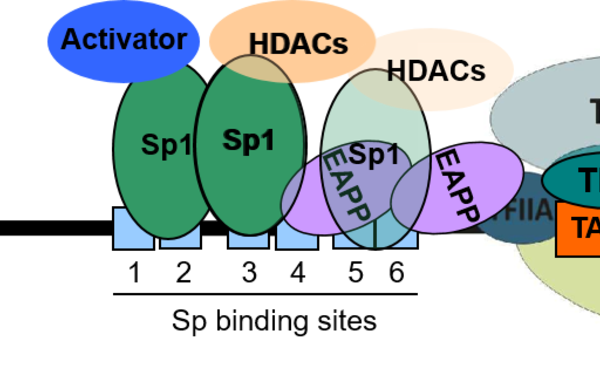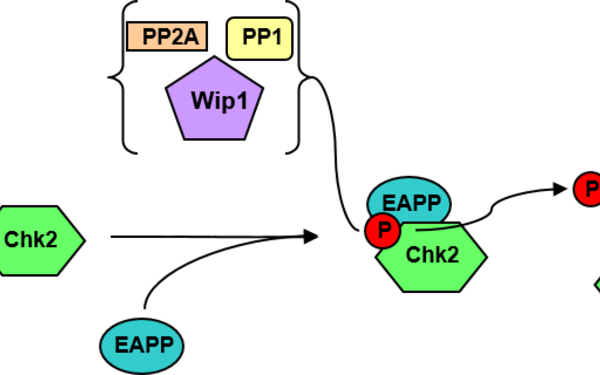Spotlights
EAPP stimulates E2F-dependent transcription
We identified EAPP in a yeast two-hybrid screen for E2F1-interacting proteins. It also interacts with E2F2 and E2F3a, the other activating members of the E2F family of transcription factors. These interactions result in elevated E2F-dependent transcription.
EAPP levels determine cell fate during stress
Overexpression of EAPP results in cell cycle arrest. This is mediated by the cdk inhibitor p21. We could show that EAPP associates with the p21 promoter and is required for the assembly of the transcription pre-initiation complex. EAPP levels increase upon cellular stress resulting in elevated p21 which is anti-apoptotic. Lower EAPP thus facilitates, higher EAPP prevents apoptosis.
Checkpoint recovery after DNA double strand break repair is influenced by EAPP
DNA double strand breaks result in rapid activation of Chk2. This kinase phosphorylates and inactivates cdc25C, a phosphatase required for entry of mitosis. After repair of the breaks Chk2 has to be inactivated to allow continuation of the cell cycle. We showed that EAPP specifically binds phosphorylated Chk2 and this results in its inactivation by the recruitment of specific phosphatases.


